Gunnerside Gill, North Yorkshire, has been a prominent mining area since as far back as the 15th century but was at its height between the 17th and late 19th centuries.
One of these mining ventures was “The Sir Francis Level” which was started by a Sir George Denys in 1864 and named after his son “Francis Denys”.
The level was a major venture, and a somewhat ambitious attempt to tap into the deeper lying deposits below the Gill. It was, however, never quite as successful as anticipated and sadly ceased operating in the early 1880’s.
Although the level was never commercially viable, its creation did in turn revolutionise mining in the area with the introduction of compressed air drills in 1870 by Sir Denys (replacing the previous technique of hand bored shot holes and powder blasting). A waterwheel driven compressor and air intake were positioned at the entrance to the level and greatly increased the speed of the mining operation. Not only that but the air from the drills acted as ventilation for the miners, negating the need to drive airshafts from the surface and saving money. The Sir Francis Level was the first mine in Yorkshire to employ this particular piece of technology.
The place seems pretty much untouched since its closure, the only difference being the high water level, although I believe this has been caused by a collapse in the original adit entrance causing the water to back up. With the right kit and a little research, the reward is an amazing site (if a little unstable in places). Not only are there many examples of 19th century architecture (such as the bricked archways and tunnel sections) along the way but the tracks can still be felt underfoot beneath the water. Perseverance through waist/chin deep water eventually leads to the elevator winching room which is truly awesome.
Hovering inches above the water filled lift shaft is an almost entirely intact elevator cage suspended by sturdy chains and original cables. Looking down the lift shaft, the counter balancing elevator can just be made out at the bottom (a long way down). Beyond the shaft, and up a random staircase leads to the "engine room" which still houses the winding drum for the cables amongst many other bits of machinery and pipes.
It is a very still and eerie place, with a sense of being trapped in time and sealed away from the present, with the added element of a degree of uncertainty when inspecting the bent and fractured, rotten wooden, stemples which have the task of hold the cieling up and have done for almost two centuries.
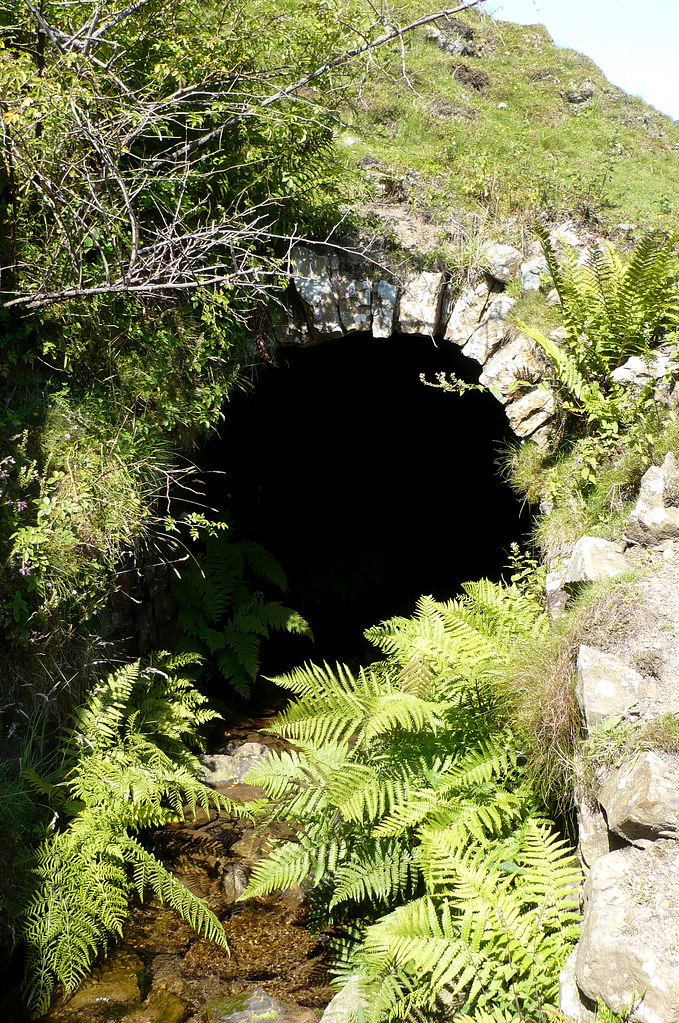
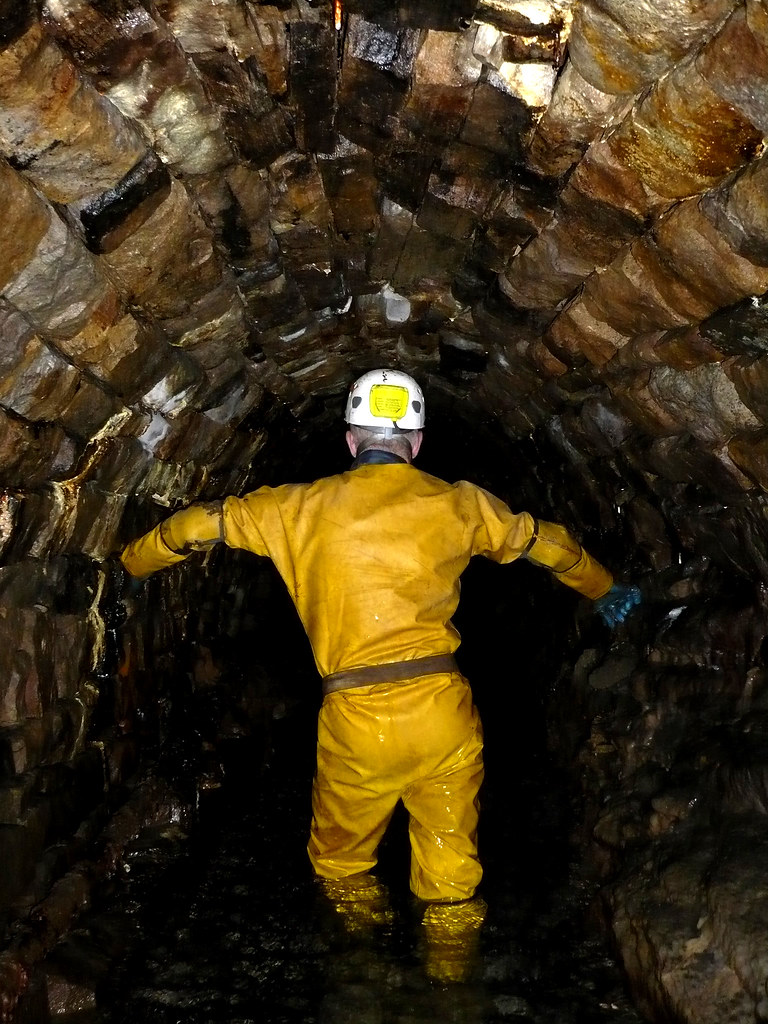
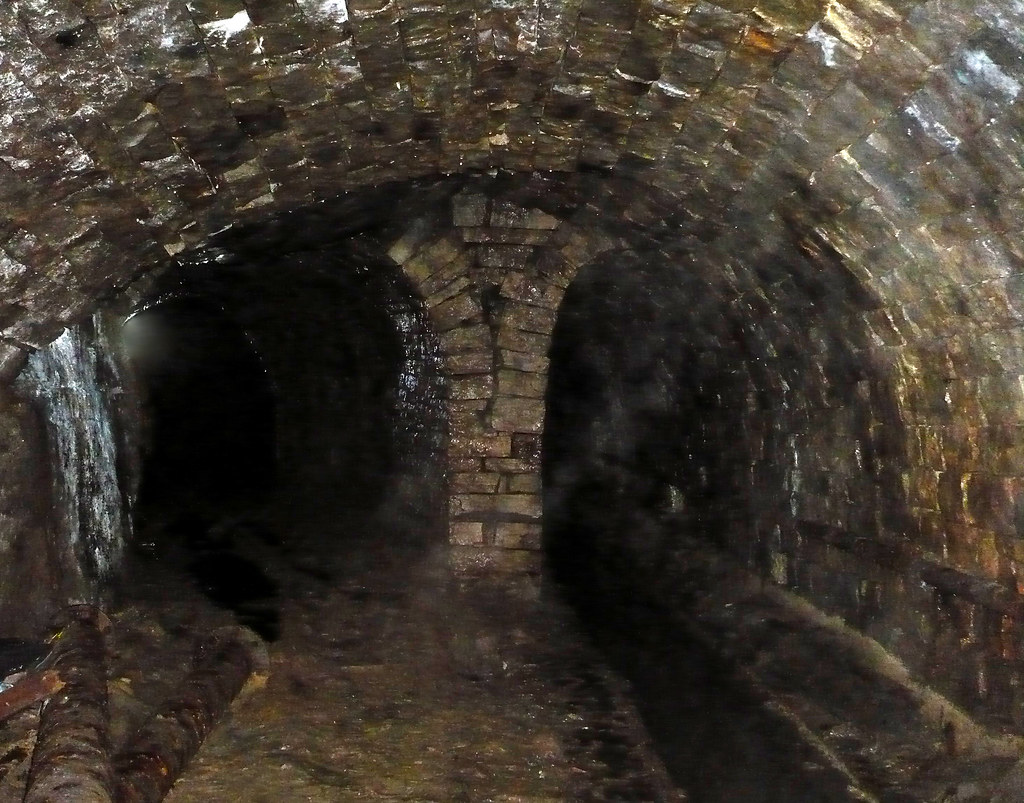
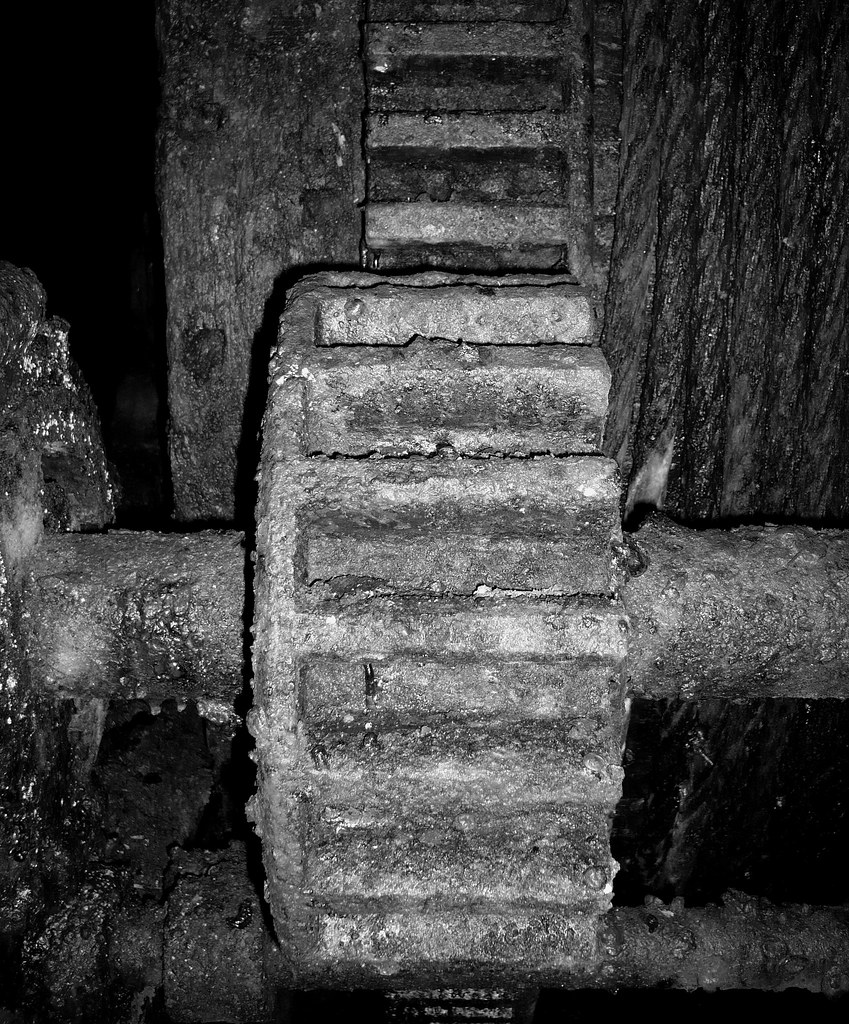
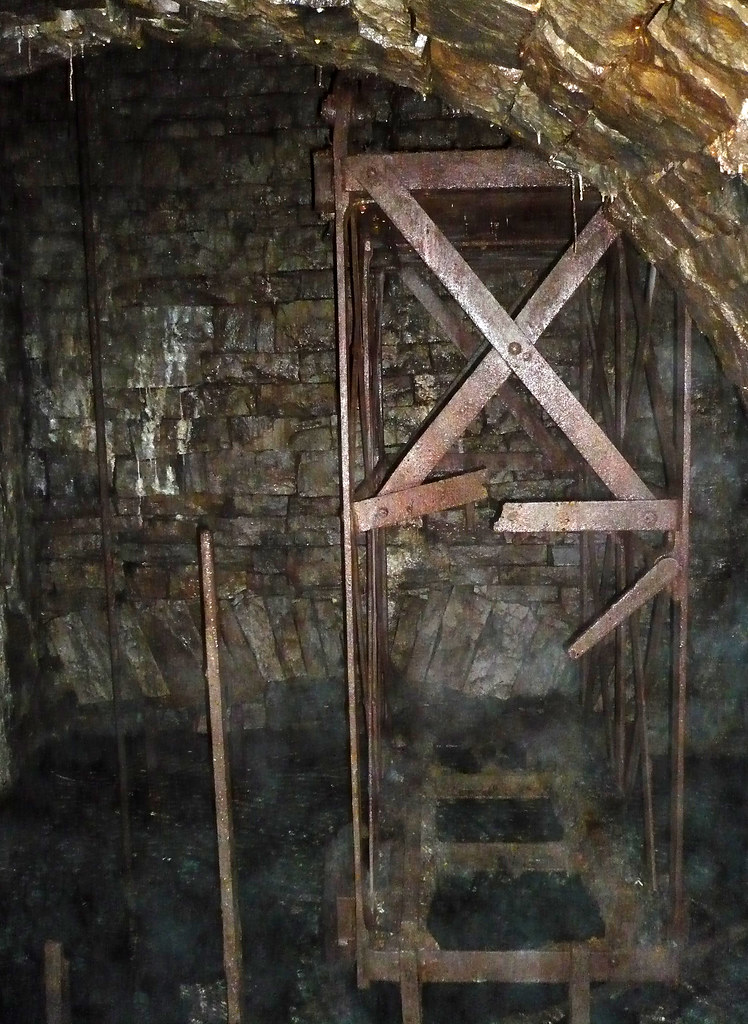
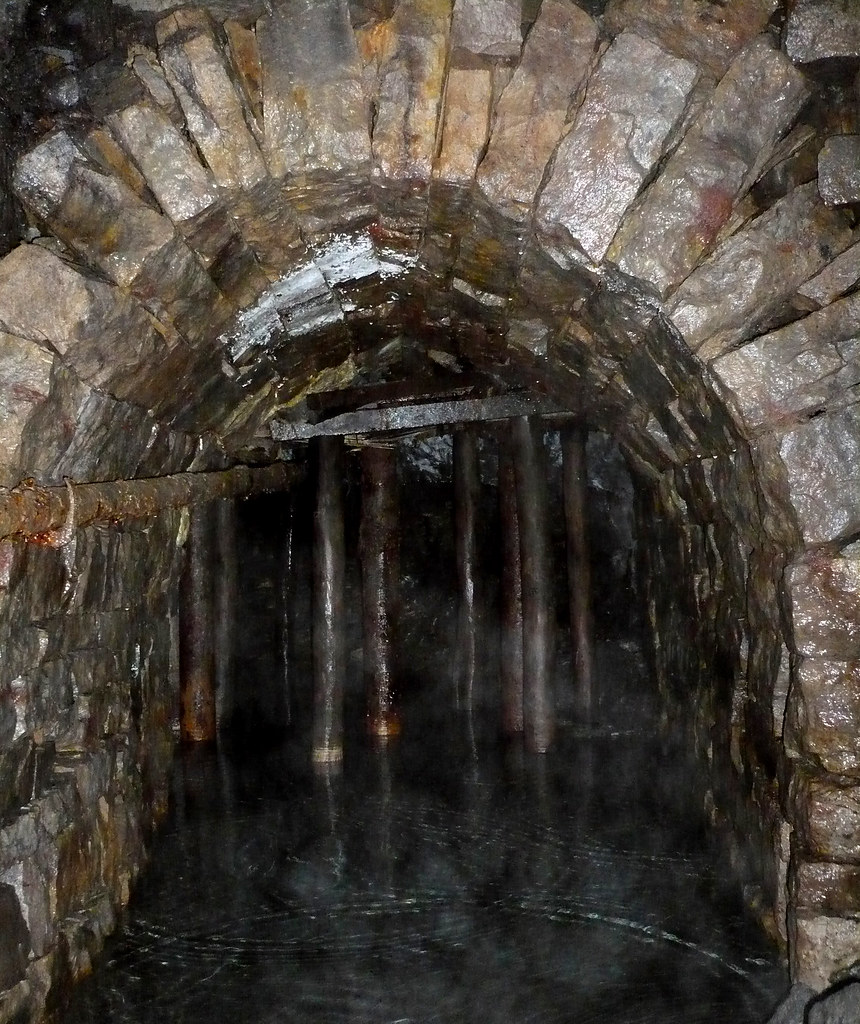
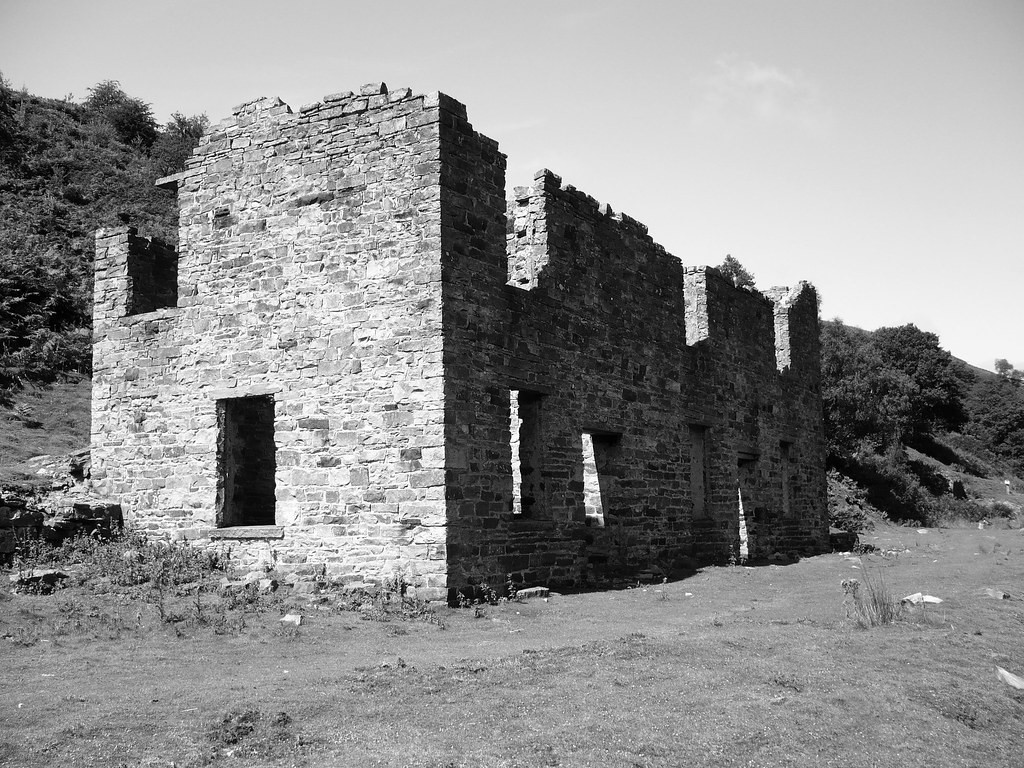
To see more pictures of the site take a look at my flickr page here - http://www.flickr.com/photos/18394337@N00/sets/72157622106077915/detail/
One of these mining ventures was “The Sir Francis Level” which was started by a Sir George Denys in 1864 and named after his son “Francis Denys”.
The level was a major venture, and a somewhat ambitious attempt to tap into the deeper lying deposits below the Gill. It was, however, never quite as successful as anticipated and sadly ceased operating in the early 1880’s.
Although the level was never commercially viable, its creation did in turn revolutionise mining in the area with the introduction of compressed air drills in 1870 by Sir Denys (replacing the previous technique of hand bored shot holes and powder blasting). A waterwheel driven compressor and air intake were positioned at the entrance to the level and greatly increased the speed of the mining operation. Not only that but the air from the drills acted as ventilation for the miners, negating the need to drive airshafts from the surface and saving money. The Sir Francis Level was the first mine in Yorkshire to employ this particular piece of technology.
The place seems pretty much untouched since its closure, the only difference being the high water level, although I believe this has been caused by a collapse in the original adit entrance causing the water to back up. With the right kit and a little research, the reward is an amazing site (if a little unstable in places). Not only are there many examples of 19th century architecture (such as the bricked archways and tunnel sections) along the way but the tracks can still be felt underfoot beneath the water. Perseverance through waist/chin deep water eventually leads to the elevator winching room which is truly awesome.
Hovering inches above the water filled lift shaft is an almost entirely intact elevator cage suspended by sturdy chains and original cables. Looking down the lift shaft, the counter balancing elevator can just be made out at the bottom (a long way down). Beyond the shaft, and up a random staircase leads to the "engine room" which still houses the winding drum for the cables amongst many other bits of machinery and pipes.
It is a very still and eerie place, with a sense of being trapped in time and sealed away from the present, with the added element of a degree of uncertainty when inspecting the bent and fractured, rotten wooden, stemples which have the task of hold the cieling up and have done for almost two centuries.







To see more pictures of the site take a look at my flickr page here - http://www.flickr.com/photos/18394337@N00/sets/72157622106077915/detail/


































